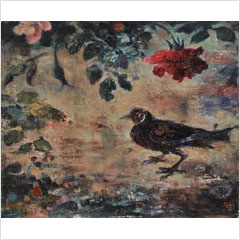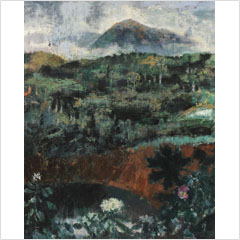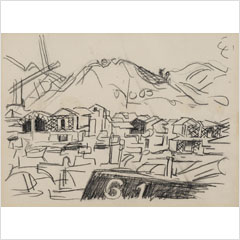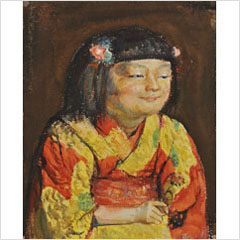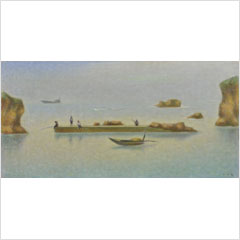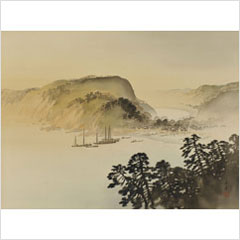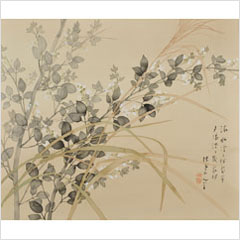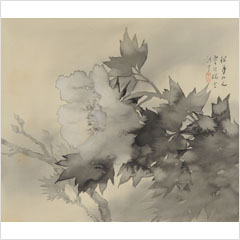-1936m.jpg)
須田国太郎
烈日下の鳳凰堂(平等院)
1936(昭和11)年 油彩・カンヴァス 52.0×64.0cm
Kunitaro Suda
Phoenix Hall (Byodo-in) Under the Scorching Sun
1936 (Showa 11), Oil on canvas, 52.0 × 64.0 cm
ある暑い夏の日、須田は京都の雷雨を避けて、宇治へ制作に出かけました。本作はそのときの取材にもとづく作品です。平等院鳳凰堂の中堂が南側廊下のやや高所、現在の六角堂辺りから描かれています。鳳凰堂は夏の烈しい日に晒され、屋根や地面が白く輝くことで、かえって暗い堂内の涼やかな空気との対比が浮かび上がってくるかのようです。
On a hot summer day, Suda went to Uji to work, avoiding the thunderstorms in Kyoto. This piece is based on the research conducted during that time. The central hall of Byodoin Phoenix Hall is depicted from a slightly elevated position on the southern corridor, around the current Rokkakudo area. The Phoenix Hall is exposed to the intense summer sun, making the roof and ground shine white, which in turn highlights the contrast with the cool air inside the dark hall.

-1936s.jpg)
